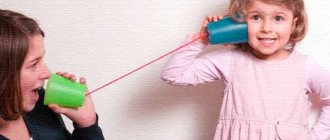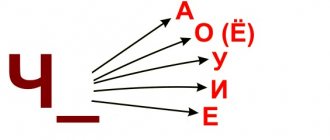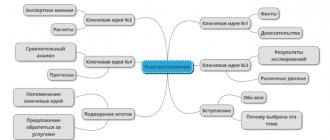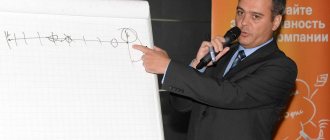Books that systematically present the basics of knowledge in the field of correction of speech disorders at the current level of scientific achievements are textbooks on speech therapy. Books on speech therapy for students are the main and leading type of educational and methodological literature. The tutorials are presented in order of importance. This page can be supplemented and corrected. The Jobs page describes ways to collaborate with the site in this area.
Relevance of the textbook
Domestic speech therapy has been actively developing since the 50s of the last century. During this time, many manuals have been created that allow specialists to correctly carry out the correction process.
Such instructions allow beginners to conduct classes correctly.
Important! The introduction of techniques allows you to avoid mistakes and problems while working with a preschooler.
Various speech disorders can occur in childhood. It is necessary to correct them in a timely manner, otherwise difficulties will arise in mastering writing and reading. This will have a negative impact on your thinking in the future.
Practical advice on speech therapy
Home exercises play a big role in correcting speech defects. Parents can conduct small lessons every day - this allows them to consolidate the material covered with a speech therapist and speeds up the correction process.
Correcting any violation begins with articulatory gymnastics. Special sets of exercises develop specific muscles that are important for pronunciation.
Additionally, breathing exercises are performed, which helps to form a strong speech exhalation. It requires special simulators that help visualize pronunciation - plumes, wind blowers, New Year's rain and others.
Introduction to Speech Therapy
Fomicheva’s book contains brief information about what speech therapy is, the subjects and tasks of science. The main methods are listed - didactic-materialistic, statistics, observation, experiment and others.
The author was able to clearly indicate that speech therapy is a branch of a large pedagogical science - defectology. It is closely related to preschool pedagogy.
The specialist must conduct lessons taking into account the individual characteristics of the child
When studying at home, you need to take into account the fact that speech is closely related to mental processes - attention, memory, thinking. The basis of special pedagogy is the anatomy and physiology of the body.
The speech therapist must have a good understanding of why certain speech disorders occur. This is necessary for the correct construction of the correction process.
Where do you start correcting sound pronunciation?
Correction of any speech disorders must be carried out according to a specific plan. First, the specialist conducts a diagnosis that allows you to assess the child’s development at a given time. After the speech therapist makes his own conclusion, he can proceed to the formation of correct sound pronunciation.
The preparatory stage includes articulation and breathing exercises, work on speech hearing. All this will be the basis for sound production.
Important! This process cannot be rushed, as it can only reinforce incorrect pronunciation.
All exercises should be performed in front of a mirror so that the child can control his actions.
The use of mnemonics in the development of speech in preschool children
Briefly about the development of a child’s speech
The baby begins to speak his first words when he is one year old and after a while he develops a simple phrase. There are about 10 words in his vocabulary, and if they are not there, then parents should worry.
Gradually, his vocabulary grows, the child clearly understands what this or that word can mean. Up to three years of age, problems with sound pronunciation are considered normal. At this age, it is still difficult for a child to connect words into coherent sentences.
By the age of four, a group of whistling sounds ([S], [C], [Z]) and hissing sounds ([Ш], [Х], [Ч], [Ш]) is formed; a slight delay may be observed. Such mild speech disorders require the attention of a specialist.
By the age of six, a child’s speech should be fully developed. He uses all sounds accurately, phrases are grammatically correct, and has a vocabulary of 3,000 words. All this will be the basis for mastering writing and reading.
If speech underdevelopment, dyslalia and other disorders are detected, the child should be shown to a speech therapist.
Methodological material for making sounds
The specialist uses various games and exercise equipment to prepare and conduct classes. All this allows us to create conditions for a successful correction process.
Each speech therapist chooses benefits at his own discretion
Fomicheva’s book describes in detail all the stages of work on correcting sound pronunciation. For articulation gymnastics, it is better to use special symbol cards. For example, which were developed by L.A. Komarova.
Correcting children's sound pronunciation can take a lot of time; didactic materials for this are often selected individually for the student.
When the student can pronounce a sound correctly in isolation, then sound symbols will be required. You can make them yourself, for example, [S] is a pump or kettle, and [W] is a hissing goose.
There are ready-made textbooks for correcting general speech underdevelopment. For example, edited by Teremkova N.E. They collect all the necessary lexical material and select different materials.
Important! All aids should be in color, as this attracts the child's attention.
It’s not enough to just pronounce a sound, you need to automate it and introduce it into speech. For this purpose, forward and backward syllables, words, and sentences are used. The material can be found in the books of Irina Lopukhina and other authors.
Child with NVAD
Speech therapy distinguishes different forms of speech disorders - dyslalia, dysarthria, general speech underdevelopment, stuttering and much more. Conventionally, they can be divided into light and heavy.
NVONR in speech therapy, which not every specialist knows what it means. This abbreviation hides a simple conclusion - a mildly expressed general underdevelopment of speech.
NVONR in speech therapy is assigned to children with dyslalia and phonetic-phonemic underdevelopment. With such disorders, problems with sound pronunciation and speech hearing are noted. Such a conclusion should not be confused with a general underdevelopment of level 3 speech, since then problems with the lexico-grammatical structure would be noted.
Children's speech by age
The Department of Speech Therapy congratulates M.F. Fomichev!
Fomicheva Maria Fedorovna was born in 1932 in Moscow. In 1951 she entered the defectology faculty of Moscow State Pedagogical Institute. IN AND. Lenina, graduated from the institute with honors in 1955, qualified as a speech therapist, teacher of Russian language and literature in high school.
In those years, teachers such as Olga Vladimirovna Pravdina, Anastasia Gavrilovna Ippolitova, Sergei Semenovich Lyapidevsky, Raisa Ivanovna Martynova taught at the institute. Maria Feodorovna's classmates were: V.I. Seliverstov, Yu.B. Nekrasova and others.
Labor activity of M.F. Fomicheva began in 1955 as a speech therapist in a children's clinic, combining her work as an assistant at the department of her native institute.
In 1958, she began organizing speech therapy care in the first opened speech therapy department of the children's city clinical hospital No. 9 named after F.E. Dzerzhinsky. The department had 35 beds, 4 speech therapists worked there. It was the only children's speech hospital in the USSR. A group of stutterers, 2 groups of children with alalia and 1 group of children with severe pronunciation disorders without cerebral palsy and a combined defect. In the ENT department, correction of voice disorders was carried out by Elena Samsonovna Almazova. Since 1965, Maria Fedorovna has been a senior speech therapist in the Dzerzhinsky district of Moscow. Having examined preschool children, it turned out that 30-55% have speech disorders. Maria Fedorovna and her colleagues approached the district party committee with a proposal to open speech therapy groups in kindergartens.
In 1966, she began teaching at Moscow State Pedagogical Institute. IN AND. Lenin. M.F. Fomicheva is a teacher and innovator. She was one of the first to introduce fairy tale therapy and play therapy, developed didactic material for educators and parents of children with various speech disorders, and stimulated students’ initiative, creativity, and love for the profession.
For many years M.F. Fomicheva worked as deputy dean of the defectology faculty for academic work, supervised retraining and advanced training courses for defectologists, and was a trade union organizer of the faculty.
For 53 years, Maria Fedorovna combined this work with the practical activities of a speech therapist in various institutions both in the healthcare system and in the education system.
Highly appreciated the contribution of M.F. Fomicheva in the development of modern speech therapy O.V. Pravdina. From the memoirs of O.V. Pravdina: “In recent years, I have seen a lot of warmth from my friends, like me, who are pensioners, as well as from some of my students. I am pleased with their professional successes. M.F. Fomicheva and S.N. Shakhovskaya continue my work in educating and training speech therapy youth.” Name M.F. Fomicheva was also known to the students of MGZPI (MSGU named after M.A. Sholokhov), where she also worked part-time for many years. Maria Fedorovna's teaching talent was combined with research abilities. In 1969, Fomicheva M.F. She worked part-time at the Research Institute of Defectology.
She is known as the author of books and teaching aids on the problems of speech development disorders in children. Maria Fedorovna has 38 publications, of which: 23 educational and methodological and 15 scientific publications used in teaching practice, including methodological manuals for speech therapists, kindergarten teachers, and students of pedagogical universities.
Maria Fedorovna always loved children and students, was a demanding and fair teacher, ready to share her professional skills and knowledge. M.F. Fomicheva trained many famous speech therapists in our country, near and far abroad.
For the birthday of Fomicheva M.F. We have prepared a video in which Maria Feodorovna shows a sample speech therapy lesson. To create the video, fragments of the recording by L. Melikhov and M. Fomichev “The speech of a preschooler and its correction” were used.
Teachers, students, graduate students of the Department of Speech Therapy, Faculty of Defectology, Moscow State Pedagogical University congratulate Fomicheva Maria Fedorovna on her birthday!
Congratulations, we thank you on behalf of the Department of Speech Therapy for many years of cooperation in the scientific and educational field, assistance in training highly qualified speech therapists and wish you good health, many bright and joyful days ahead!
Photo gallery
20.08.2020
PreviousBack to top Next
Didactic materials on sound pronunciation correction
Parents are always interested in how to teach their child to pronounce letters correctly. To do this, use various aids and games that will help reinforce the correct pronunciation of sounds.
Forms of speech disorders
Learning to speak correctly is not so easy. Much depends on the type of disorder and each diagnosis requires special assistance. Exercises for severe dysarthria in children are aimed at relieving muscle tone and restoring their mobility.
Correct identification of the violation determines the success of the correction process
It’s not enough to just pronounce syllables or words; you need to work systematically with the child. The success of the correction depends only on this.
Basic tutorial
Speech therapy. Textbook for universities, ed. prof. L. S. Volkova - the main textbook on speech therapy for students.
The structure of the book is presented in four sections and corresponding chapters. Section 1 describes the basic foundations of the theory and methodology of speech therapy science. The following outlines the doctrine of specific speech defects and methods of their correction, the organizational aspect of speech therapy work, and historical information in accordance with the topic under consideration. A glossary of terms is included at the end of the publication.
The chapters of the textbook consist of the following elements: characteristics of the defect in historical context, causes, pathogenesis, symptoms, classification characteristics, methods of speech therapy diagnosis and correction, and measures to prevent the development of speech disorders. The end of the chapters is made up of conclusions, test questions and exercises, as well as a list of additional literature.
Sound pronunciation screen in a group
The speech therapist needs to have a good idea of what disorders his children have. The sound pronunciation screen in the speech therapy group allows you to enter the data of preschoolers and mark which sounds are problematic for a particular child.
Important! It is imperative to make a note about whether the preschooler is replacing or distorting the sound.
The designation for the norm is quite simple - N or plus sign. All this will allow you to quickly display statistics on the condition of children in the group. Beginning specialists can use the filling template that senior colleagues have.
To make it easier to understand, it is advisable to highlight the group with speech disorders in different colors - this will allow you to create lists for classes.
Exercises for dysarthria for children
Compensation in speech therapy is the restoration or replacement of lost functions. With dysarthria, there are problems with muscle innervation, so it is difficult to teach such a child to speak correctly.
Therefore, special exercises for correction are necessary. In articulatory gymnastics, special attention is paid to switching from one pose to another. It is advisable to conduct speech therapy massage.
Example exercises are coughing, whistling, alternately puffing out cheeks, mooing, etc. It is useful to inflate balloons and deflate paper balls.









